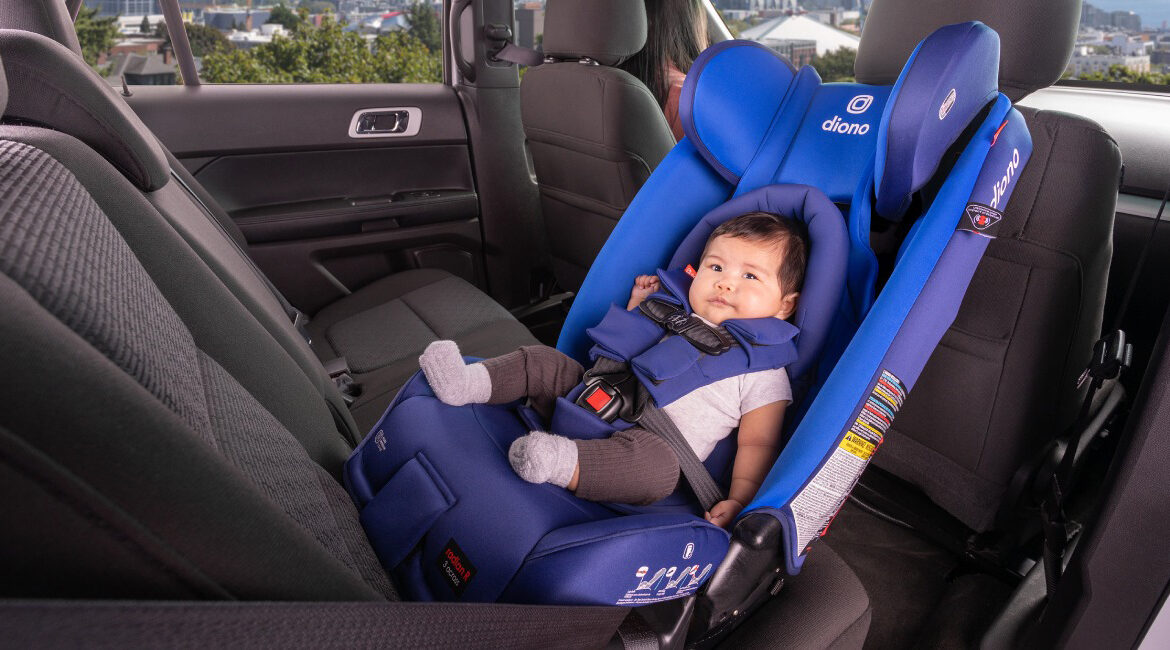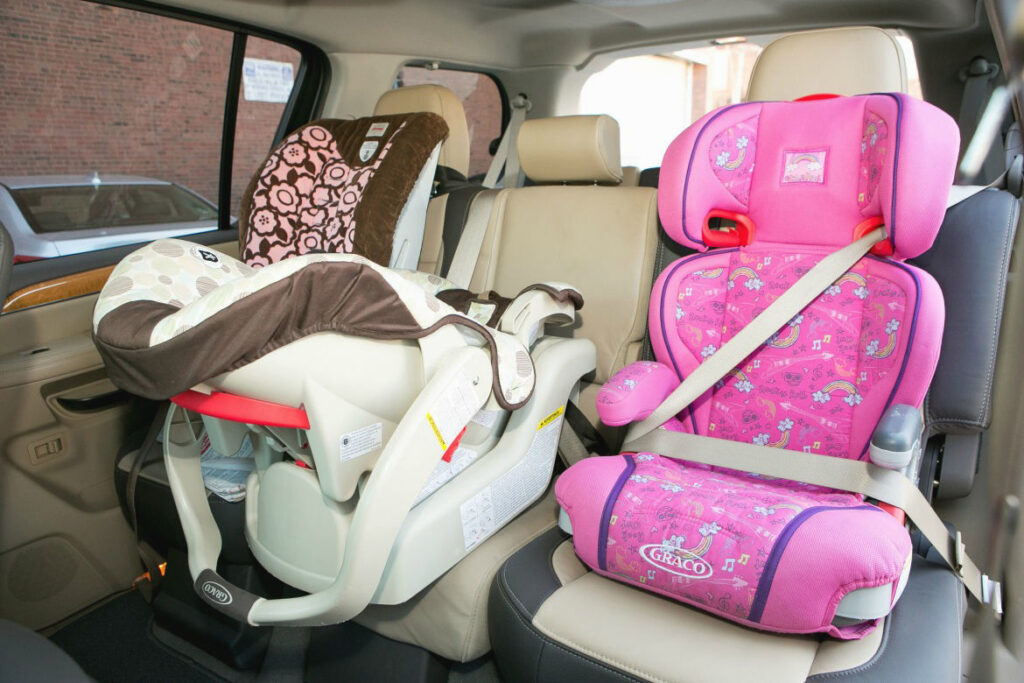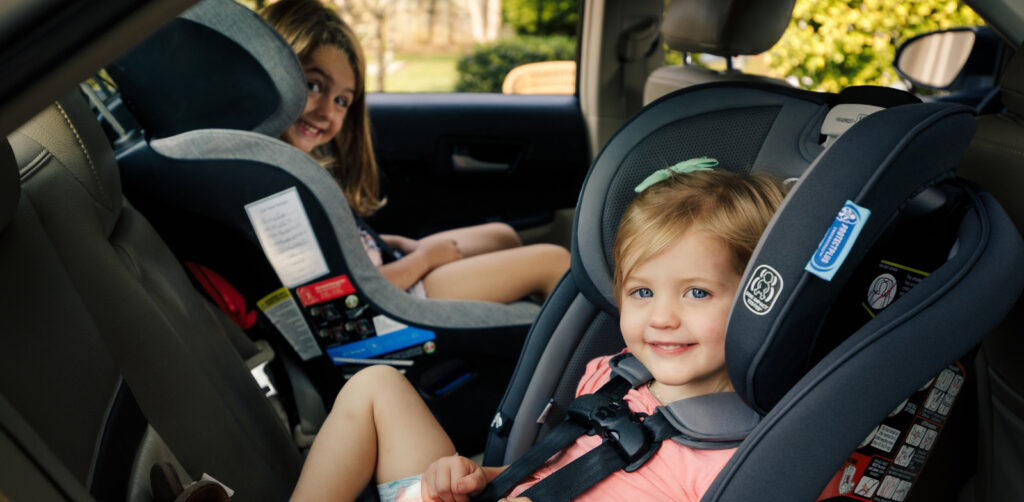
When Can I Turn My Infant Car Seat Facing Forward?
Do you want to turn your infant car seat facing forward but are still unsure whether it’s time? I know how making any changes to your toddler’s car arrangements can make you lose sleep at night, especially if you’re abandoning the safest position possible, rear-facing. However, if it’s time, I assure you it’s completely safe.
To help you know for sure whether the time is right, I’ll answer your question in detail from my own experience and research, so let’s dive in!
When Is the Right Time to Turn an Infant Car Seat Facing Forward?
Up until a short time ago, it was a standard for parents to turn their infant car seats facing forward once their child reaches 2 years old. However, from research, I’ve found that age isn’t the only metric you should consider. According to guidelines by the American Academy of Pediatrics, a child’s weight and height are your go-to indicators.
Once your kid reaches the maximum weight and height recommended by your car seat manufacturers to stop using it, then you can get a convertible seat and turn it forward.

Taking these factors into consideration is important because not all kids grow the same. Some kids might reach the maximum numbers by the time they turn 2 years exactly. However, some may take a longer time, which is okay but means that they aren’t ready to upgrade their infant car seat yet.
Generally, experts are leaning toward leaving kids facing the rear for the longest time possible. In turn, car seat manufacturers are trying to make their seats more comfortable when in this position.
If you haven’t bought an infant car seat yet, check out my guide on what factors you should consider before getting it!
Why Is the Rear-Facing Position the Safest?
You might be wondering why a car seat’s rear-facing position is deemed the safest, so let me explain it to you. In case of a sudden stop or a crash, anybody riding in the car will have their necks and heads thrown forward because of the car’s speed.
This movement might cause mild or serious injuries in adults, depending on how fast the car was going and whether the passenger was wearing a seat belt. However, when it happens to children, it most often leads to serious injuries because they’re smaller and lighter than us, so the force affects them more.

That’s where the importance of rear-facing car seats shows. While sitting inside it, children have their heads and necks supported by the seat, which gives them a decent amount of protection and eliminates any sudden jolts around the spinal cord area.
More than that, in case of any collision, the seat’s back takes most of the trauma since it’s the one facing the front of the car. If the seat is facing forward, the 5-harness belt will only take minimal trauma and won’t provide sufficient protection.
Because of what I mentioned above, kids should only face front if their bodies are developed well enough to take sudden jolts without risking injuries. Also, you should place the seat on the right side of the car to avoid safety hazards. To learn more about that, click here!
What Car Seat Do I Use for the Shift From Rear to Front?
If your child has outgrown their infant car seat and you think it’s time for them to face the front, you have two options, getting an all-in-one seat or a convertible seat.
Convertible seats can face the rear and the front, unlike infant car seats, which only face the rear. They’re ideal for worrying parents because they can face the rear longer than regular infant seats. If you’re still not ready for your child to make the shift, you can stall it with your convertible and turn forward whenever you feel it’s time.
All-in-one seats are different only in that they also work as booster seats, so they last longer than convertibles. However, I don’t prefer them because they’re often too heavy and bulky. When placed inside a small car, they take up too much space.
Both types can face both the rear and the front, so you’re free to choose between them.
Quick Tips for a Safe Front-Facing Ride in the Car Seat
When it’s finally time to turn your car seat forward, there are a few tips you should follow to ensure your child’s safety and comfort. Here’s a quick list of them!
- Install the car seat properly: Always read the manual that came with your car seat to know how to install it facing forward correctly. If you face issues in the process, you can watch Youtube videos or go to your nearest fire department and ask them to help you.
- Check the seat’s harness: Check all the buckles and straps around your child’s body to ensure they aren’t twisted or improperly connected. There should be two straps across the chest, two around the abdomen, and one between the legs.
- Put the seat in the middle back seat: Middle seats are the safest for children because they’re the furthest away from compact points, and the back is safer because most cars have airbags in the front, which are unsafe for children if deployed.
- Check your state’s regulations: States have different regulations regarding the maximum weight and height for a rear-facing car seat. Before making the shift, check that what you’re doing falls within your state’s requirements.
- Hang a sunshade if your kid gets motion sickness: Some kids get motion sickness when they watch the fast movements of other cars from the window. If your child gets sick, hang a sunshade on the surrounding windows to limit their views of the outside.
Common Questions From Worrying Mothers!
Do Infant Car Seats Protect Children in Case of Rear Impacts?
Infant car seats, coupled with the car’s backseats, provide sufficient protection for your child in case of rear impacts. Also, to put your mind at ease, these impacts are almost always less forceful than front ones because both cars are moving in one direction, so no need to worry.
What Do I Do If My Child Has Had Enough of Facing the Rear?
If your child gets bored easily, you should provide them with enough distractions for the ride. The ones that work most with my children are coloring books, stickers, and snacks. Some parents also install mirrors in the back so that they can interact with their kids while driving, but I advise against that because you might get distracted from the road.
Are Infant Car Seats Safe for Long Road Trips?
As recommended by many car seat manufacturers, you shouldn’t leave your child in the car seat for longer than 2 hours at a time. If you need to go on a long road trip, it’ll be best to take regular breaks and carry your kid out of the seat.
To Wrap Up
The right time to turn your infant car seat facing forward is when your child outgrows the seat. To know for sure, check the maximum weight and height recommended by the car seat manufacturers. If your child passed them, then you can make the transition safely!